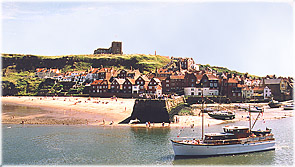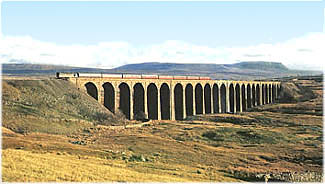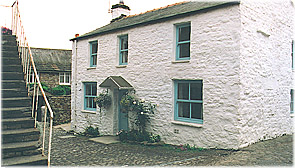
March 2000
|
The year progresses and we
pass various mileposts. Twelfth Night, Plough Monday (back to work in medieval
times), Burns Night, Candlemas, St Valentine’s Day, St David’s Day, the
Spring equinox, Lady Day (the first quarter day). These dates are fixed,
unlike Easter and those days associated with it – Shrove Tuesday, Ash
Wednesday, Mothering Sunday and Holy Week. Easter this year is just about as
late as it can possibly be and coincides with St George’s Day. The
Synod of Whitby met at Whitby on the Yorkshire coast in the autumn of 663. It
had been called to decide whether England would date Easter according to the
Roman model (the first Sunday following the first full moon following the
Spring equinox) or in the manner of the Celtic churches. The Roman method was
adopted.
|
Whitby |
|
Ribblehead Viaduct |
One
can well imagine the difficulties in getting to Whitby in 663. Not many
scheduled flights. Still a large number of celebrities of the time made it –
Wilfred, King Oswui, Bishop Agilbert of Wessex joined the abbess Hilda. The
result of their deliberations is that Easter can fall at any time between the
vernal equinox and late April. No doubt before too long the European
Commission will take steps to standardise the date for the convenience of
diary makers and Easter egg manufacturers. At
the beginning of March I had to go to Carlisle for a business meeting. I took
the opportunity to go by train from Leeds. This involves travelling on what is
generally known as the Settle-Carlisle railway, recognised as one of the most
spectacular and scenic routes in the country.
|
| Its
72 miles were built in six years by 6000 navvies before it was opened in 1876.
When today one sees the twenty major viaducts, fourteen tunnels, miles of
cuttings and embankments it is staggering to think that this was constructed
by men using picks and shovels. There was virtually no mechanical power used.
Blea Moor tunnel is 2629 yards long. Dent is the highest station on an English
main line. The entire railway cost £3.5 million, about the price of a town
house in Kensington now. |
Cottage at Dent Town |
From Leeds we followed the Aire, the Leeds-Liverpool canal and the A65 to Skipton, after which the show really begins. It was a day of torrential rain which, of course, obscured the views - Ingleborough and Pen-y-Ghent were out there somewhere - but at the same time it was exciting to see the Ribble and the Eden swollen to the point of overflowing and water poured from the fells and tumbled down the hills into the sodden valleys below.
North
of Horton-in-Ribblesdale is the Ribblehead viaduct that has twenty-four arches
spanning Batty Moss over a hundred feet below. It is built on marshland, which
represented something of a challenge to those Victorian engineers. Thousands
of tree trunks were drilled into the marsh to support the viaduct. On top of
the tree trunks were placed thousands of sheepskins. In reality this enormous
viaduct is essentially floating on its boggy foundation.
Some
years ago it was proposed to close this line. For the present it has been
reprieved. One can only hope that it is used sufficiently to justify its
continued existence. The railway architecture is itself worth seeing; the
stations and other buildings along the line are all built to the same design
using different local materials.
I
also went to Birmingham last week. It’s still awful.
David Brearley.


